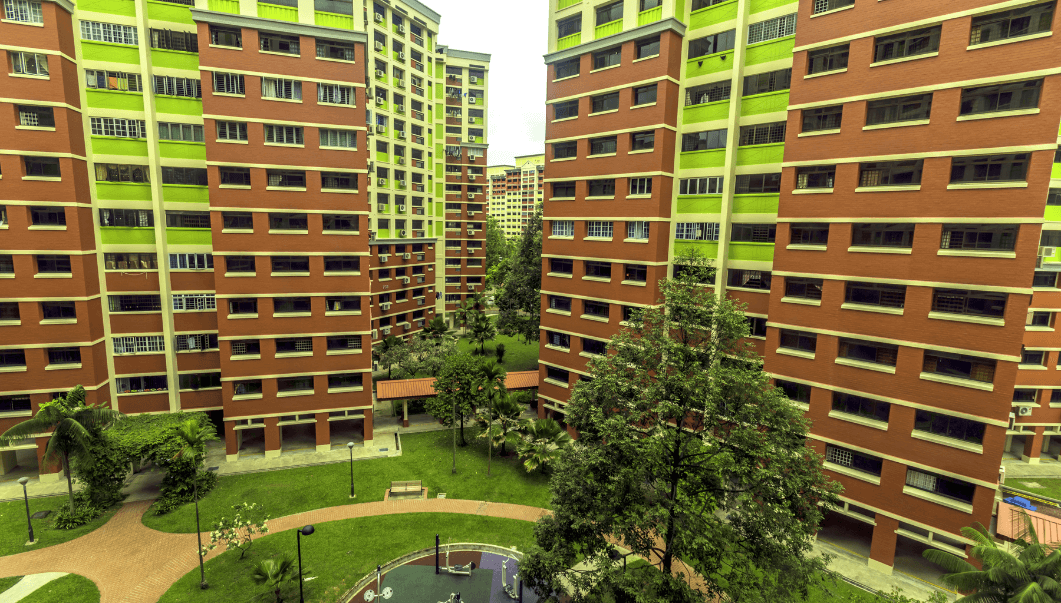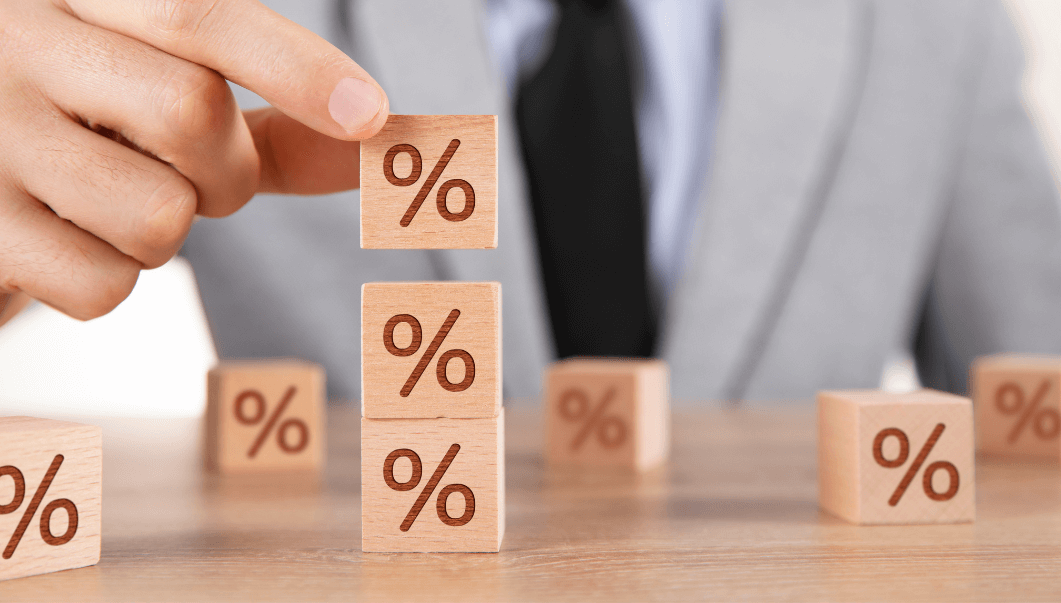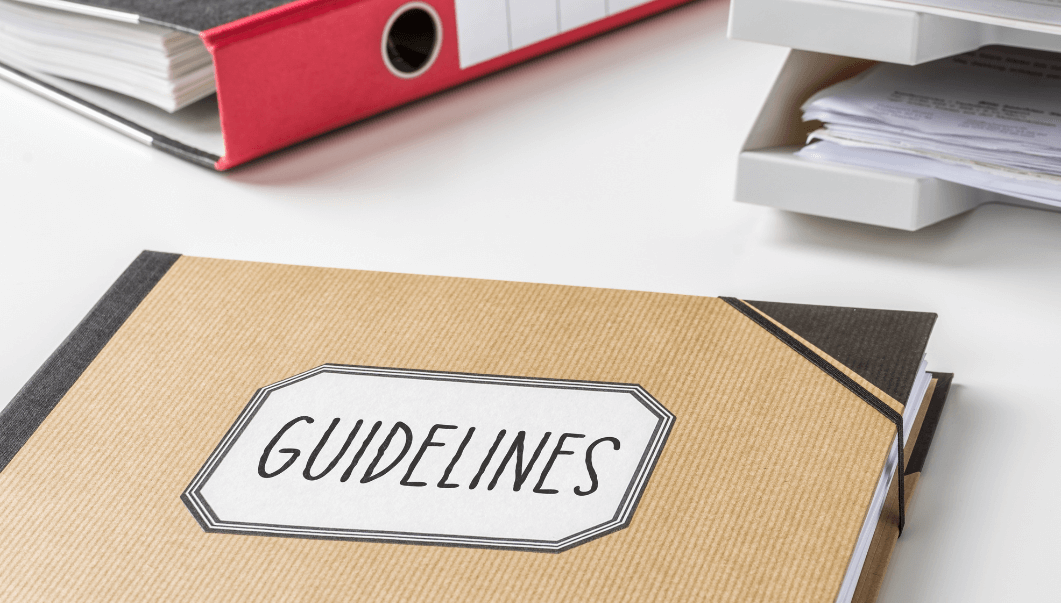
For Singaporean couples looking to sell their property, it’s important to understand the concept of Seller’s Stamp Duty (SSD). This is a form of stamp duty payable on residential properties in Singapore, and it’s crucial to be aware of the rates and dates applicable when planning to sell your property.
What is Seller’s Stamp Duty (SSD)
Seller’s Stamp Duty (SSD) is a tax imposed on property sellers in Singapore. It is designed to discourage short-term property speculation and stabilize the property market. The SSD rates are calculated based on the holding period of the property, starting from the date of purchase or acquisition.
When selling a residential property, the SSD payable depends on the date of sale or disposal. If the property is sold within the first year of purchase, the SSD rate is 12% of the selling price or market value, whichever is higher. The rate gradually decreases to 8% if the property is sold between the second and third year, and to 4% if sold between the third and fourth year. From the fourth year onwards, no SSD is payable.
Importance of SSD in Singapore’s property market
SSD plays a significant role in shaping the property market in Singapore. It helps to discourage speculators from flipping properties for quick profits, thereby promoting stability and preventing property bubbles. The Inland Revenue Authority of Singapore (IRAS) enforces the SSD rules, ensuring compliance and fairness for all property sellers.
For homeowners, understanding the implications of SSD is crucial when deciding whether to sell their property. By knowing the SSD rates applicable based on the holding period, homeowners can make informed decisions and plan their property transactions accordingly. This knowledge can also help potential buyers in assessing their purchase options and understanding the potential costs involved.
In conclusion, Seller’s Stamp Duty is an important consideration for property sellers in Singapore. By understanding the rates and dates applicable, homeowners can better assess their options and make informed choices when it comes to selling their property in the Singaporean real estate market.
Key Takeaways
- SSD Introduction: SSD is crucial for Singaporean property sellers, as it’s a tax designed to discourage short-term property speculation and stabilize the market.
- Understanding SSD: SSD rates depend on the holding period of the property, starting from the date of purchase, with rates decreasing over time.
- Significance of SSD: SSD helps maintain property market stability by deterring speculators from quick property flips, enforced by the IRAS.
- Implications for Homeowners: Homeowners should understand SSD rates based on the holding period to make informed decisions about selling their property.
- Overview of SSD Rates: Different SSD rates apply based on the acquisition date: before 20 Feb 2010, 20 Feb 2010 to 11 Mar 2017, and after 12 Mar 2017.
- Calculating SSD: SSD is calculated based on property value, holding period, and applicable rates, ensuring compliance with IRAS regulations.
- SSD for Different Property Types: SSD rates vary for HDB flats, private residential properties, and landed properties.
- Stay Updated: SSD rates may change, so it’s essential to check the IRAS website for the latest information.
- When to Pay SSD: Property sellers must pay SSD if they sell within the holding period, with exceptions for certain cases.
- Effect on Property Investments: Investors should consider SSD rates and duration when planning property investments, as it impacts short-term speculation.
Understanding SSD Rates in Singapore
Overview of stamp duty rates for residential properties
If you are planning to sell your property in Singapore, it’s important to understand the Seller’s Stamp Duty (SSD) rates. The SSD is a tax imposed on properties that are sold within a specific holding period. The rates applicable depend on the date of purchase or acquisition.
The Inland Revenue Authority of Singapore (IRAS) sets the SSD rates, which can vary depending on the holding period. For properties acquired before 20 February 2010, the rates range from 1% to 3% of the property value if sold within one to four years. For properties acquired between 20 February 2010 and 11 March 2017, the rates range from 4% to 16%. For properties acquired on or after 12 March 2017, the rates range from 12% to 24%.
Calculating SSD payable based on property value and holding period
To calculate the SSD payable, you need to know the property value and the holding period. The SSD payable is the higher of the following: a percentage of the property value or the market value at the date of sale or disposal, minus the purchase price.
The holding period is the duration between the date of purchase or acquisition and the date of sale or disposal. If you sell your property within the holding period, the SSD is payable. However, once the holding period is over, you are no longer required to pay the SSD.
SSD rates for different types of properties (HDB, private, landed)
The SSD rates vary depending on the type of property. For HDB flats, the rates range from 8% to 12% if sold within the first year, and 4% to 8% if sold within the second year. For private residential properties and landed properties, the rates range from 12% to 24% if sold within the first year, and 8% to 16% if sold within the second year.
It’s important to note that the SSD rates may change, so it’s advisable to check the IRAS website for the most up-to-date information.
In conclusion, understanding the SSD rates in Singapore is crucial for property sellers. By knowing the rates applicable to your property type and holding period, you can make informed decisions and plan your property transactions accordingly.
When do You Need to Pay SSD?

In Singapore, when selling a residential property, you may be subject to the Seller’s Stamp Duty (SSD). The SSD is a tax imposed on properties that are sold or disposed of within a certain period after their date of purchase. The purpose of the SSD is to discourage property speculation and stabilize the property market.
Factors determining the need to pay SSD
The factors that determine whether you need to pay SSD include the date of purchase or acquisition of the property and the date of sale or disposal. The SSD rates applicable depend on the holding period of the property.
For properties acquired on or after 20 February 2010, the SSD is payable if the property is sold within:
- 1 year from the date of purchase: SSD is 12% of the selling price or market value, whichever is higher.
- 2 years from the date of purchase: SSD is 8% of the selling price or market value, whichever is higher.
- 3 years from the date of purchase: SSD is 4% of the selling price or market value, whichever is higher.
It’s important to note that if you have exercised an Option to Purchase (OTP) on or after 14 January 2011, the holding period will be counted from the date of the OTP, not the date of purchase.
Exceptions and exemptions to SSD payment
There are exceptions and exemptions to the payment of SSD. For example, if you are selling a Housing and Development Board (HDB) flat, there is no SSD payable. Additionally, if the property has been inherited, transferred by way of gift, or acquired through a court order, SSD may not apply.
Consequences of not paying SSD
If you sell your property within the SSD holding period and fail to pay the required SSD, you will be liable for penalties and interest charges. The amount of SSD payable depends on the selling price or market value of the property and the number of years within the holding period.
To avoid any complications, it is crucial to be aware of the SSD regulations and fulfill your obligations as a property seller in Singapore.
SSD for Residential Properties (Residential property owners, property transactions)

If you are a residential property owner in Singapore, you may have come across the term “Seller’s Stamp Duty” or SSD. In this article, we will delve into the specifics of SSD for residential properties and explore its implications on selling your property and property investments.
Specifics of SSD for residential properties
When it comes to the SSD for residential properties, there are several specifics that you need to be aware of. The SSD is applicable to residential properties sold within a specific holding period, which is based on the date of purchase or acquisition. The rates applicable vary depending on the duration between the date of purchase and the date of sale or disposal.
For HDB flats, there are additional considerations. The transfer of an HDB flat within the family, such as from parents to children or between siblings, may be exempt from SSD, provided certain conditions are met. This exemption aims to facilitate family transfers and promote housing stability.
Implications of SSD on selling your property
One of the key implications of SSD on selling your property is the stamp duty payable. The SSD rates are progressive, with higher rates applicable for properties sold within a shorter holding period. Therefore, if you sell your property within a few years of purchase, you may need to pay a higher SSD amount.
It is important to note that certain exceptions apply, such as the Selective En Bloc Redevelopment Scheme (SERS) for eligible HDB flats. Properties acquired under the SERS may be exempt from SSD to provide flexibility for homeowners.
Effect of SSD on property investments
The effect of SSD on property investments is significant. The SSD for residential properties aims to discourage short-term speculative activity in the property market. By imposing SSD, the government seeks to promote stability and prevent price bubbles.
Investors should be mindful of the SSD when considering their property investment strategies. Understanding the SSD rates and duration is crucial for making informed decisions. It is also important to take note of any changes in the SSD policy, as the government periodically reviews and adjusts the rates and duration.
In conclusion, the Seller’s Stamp Duty (SSD) for residential properties in Singapore has specific implications on property owners and investors. Being aware of the SSD rates, duration, and exemptions is vital for making informed decisions and ensuring compliance with the regulations.
Date of Purchase or Acquisition

Significance of date of purchase or acquisition in SSD calculation
When it comes to Seller’s Stamp Duty (SSD) in Singapore, the date of purchase or acquisition plays a crucial role in determining the amount payable. The SSD is a tax imposed on the sale of residential properties within a certain holding period. Understanding the significance of this date is essential to ensure compliance and avoid unnecessary penalties.
The date of purchase or acquisition refers to the date when ownership of the property is transferred to the buyer. It is important to note that it is not the same as the date of agreement for lease or the date when the buyer signs the contract.
Based on the date of purchase or acquisition, the stamp duty rates applicable for SSD are as follows:
- For properties sold within the first year of purchase, the SSD rate is 12%.
- For properties sold within the second year, the SSD rate is 8%.
- For properties sold within the third year, the SSD rate is 4%.
Clarifying the rules on SSD calculation based on acquisition date
To calculate the SSD payable, the date of purchase or acquisition is used to determine the holding period. The holding period is the duration between the date of purchase and the date of sale or disposal.
It is important to understand that the SSD is applicable to the sale of entire properties or parts of residential properties. This includes interests in the residential property, such as shares or units in a property holding company or a partnership.
Examples illustrating SSD calculation based on different acquisition dates
To better illustrate how the SSD calculation works, here are a few examples:
- If a property seller purchased a residential property on 1st January 2022 and sells it on 1st March 2023, the holding period would be 14 months. The SSD payable would be based on the applicable rate for properties sold within the second year.
- If a property seller acquired a 50% interest in a residential property on 1st July 2021, and sells the interest on 1st August 2023, the holding period would be 25 months. The SSD payable would be based on the applicable rate for properties sold within the third year.
Understanding the date of purchase or acquisition is crucial when it comes to calculating the SSD payable in Singapore. It is advisable to consult the Inland Revenue Authority of Singapore (IRAS) or seek professional advice to ensure accurate compliance with SSD regulations.
Date of Sale or Disposal

Understanding the importance of date of sale or disposal in SSD calculation
When it comes to Seller’s Stamp Duty (SSD) in Singapore, the date of sale or disposal plays a crucial role in calculating the amount payable. Whether you are selling a residential property, an HDB flat, or a shop with living quarters, understanding the importance of this date is essential.
The SSD is a tax imposed by the Inland Revenue Authority of Singapore (IRAS) to discourage short-term property speculation. The rates applicable are based on the holding period of the property, which starts from the date of purchase or acquisition.
If you sell your property within the holding period, you will need to pay SSD. The holding period varies depending on the type of property. For residential properties, the holding period is typically three years, but it may be longer for certain cases. On the other hand, for HDB flats, the holding period is five years.
To calculate the SSD payable, you need to know the sale date or disposal date. This is the date when the property is legally transferred to the buyer. The SSD payable is determined based on the stamp duty rates applicable at the time of the sale.
Exploring the rules and considerations for SSD calculation based on sale date
When selling residential properties, the SSD calculation is straightforward. If you sell your property within the holding period, you will be subject to SSD. The amount payable depends on the duration of the holding period and the purchase price of the property.
It’s important to note that the SSD rates may change over time. The SSD rates applicable at the date of sale will be used to calculate the stamp duty payable. Therefore, it’s crucial to stay updated with the latest SSD rates provided by the IRAS.
If you are unsure about the SSD calculation or have any specific concerns, it’s advisable to consult with a tax professional or refer to the official IRAS website for detailed information.
Remember, understanding the importance of the date of sale or disposal and adhering to the SSD rules and considerations will help you navigate the process of selling your property in Singapore smoothly and avoid any unexpected tax liabilities.
Rates Applicable for SSD

Detailed breakdown of SSD rates applicable in Singapore
For property sellers in Singapore, it is important to understand the Seller’s Stamp Duty (SSD) rates and when they are applicable. The SSD is a form of tax that property sellers need to pay if they sell their residential properties within a certain period after the date of purchase or acquisition.
The rates of SSD vary depending on the holding period of the property. Here is a detailed breakdown of the SSD rates applicable in Singapore:
- Sold within the first year of acquisition: 12% of the property price
- Sold within the second year of acquisition: 8% of the property price
- Sold within the third year of acquisition: 4% of the property price
It is important to note that the SSD rates are only applicable to residential properties and do not apply to other types of properties such as commercial or industrial properties.
Recent updates and changes to SSD rates
The SSD rates in Singapore have undergone some recent updates and changes. As of 2023, the SSD no longer applies to residential properties sold four years or more after the date of purchase or acquisition.
Previously, sellers were required to pay SSD if they sold their residential properties within the first three years of acquisition. However, with the recent changes, sellers are only required to pay SSD if they sell their properties within the first three years.
To calculate the Seller’s Stamp Duty, you can use the formula: SSD payable = property price x applicable SSD rate.
If you are planning to sell your property in Singapore, it is important to be aware of the SSD rates applicable to your situation. Consulting with the Inland Revenue Authority of Singapore (IRAS) or seeking professional advice can help you understand the specific SSD payable for your property.
Understanding the rates and changes to SSD can help property sellers in Singapore make informed decisions when it comes to selling their residential properties.
IRAS Guidelines and Procedures

Guidelines set by the Inland Revenue Authority of Singapore (IRAS) for SSD payment
When it comes to selling your property in Singapore, it is important to understand the regulations set by the Inland Revenue Authority of Singapore (IRAS) regarding Seller’s Stamp Duty (SSD). The IRAS has specific guidelines to ensure the accurate payment of stamp duty for residential properties.
According to IRAS guidelines, SSD is payable on residential properties that are sold within a specified period from the date of purchase or acquisition. The rates applicable are determined by the date of sale or disposal. These rates vary depending on the holding period of the property.
If you are a property seller, it is crucial to consult with a property agent or refer to the IRAS website for the most up-to-date stamp duty rates and regulations. This will ensure that you are aware of the exact amount you need to pay when selling your property.
Procedures to calculate and pay SSD accurately
To calculate the SSD accurately, you need to consider the holding period of your property. If you have purchased a residential property on or after 14 January 2011 and sold it within the holding period, SSD may be applicable.
For residential properties purchased before 11 March 2017, SSD is payable on the open market value of the property if it is sold within the holding period. On the other hand, for residential properties acquired on or after 11 March 2017, SSD rates are based on the purchase price or market value, whichever is higher.
If you are a seller who intends to sell your HDB flat and return it to HDB, different SSD rules may apply. It is important to familiarize yourself with these rules and consult the IRAS guidelines to ensure that you accurately calculate and pay the SSD.
By following the IRAS guidelines and understanding the procedures to calculate and pay SSD accurately, you can ensure compliance with the regulations and avoid any penalties or financial implications related to the payment of stamp duty on your residential
Conclusion
In conclusion, the Seller’s Stamp Duty (SSD) is an important consideration for individuals selling residential properties in Singapore. The SSD is a tax imposed on sellers who dispose of their residential properties within a specified holding period. It aims to discourage property speculation and stabilize the property market.
Under the Residential Property Act, sellers of residential properties, including HDB flats, must pay SSD if they sell the property within three years of purchasing it. This applies to both private and public residential properties. Additionally, sellers of HDB flats are subject to other regulations, such as the Minimum Occupation Period (MOP) and the inability to dispose of either one of their HDB flats if they own multiple properties. HDB Flat Sellers purchased the property parts of the residential property, holding period of 3 years, and owns an HDB Flat partial interest in the residential. Property cooling open market before HDB return their flats to HDB as a result of re-possession by hdb or under the sers.
The SSD amount is calculated based on the higher of the selling price or market value of the property and must be paid within 14 days from the date of the executed sale. Failure to pay the SSD within the stipulated timeframe may result in penalties and legal consequences.
It is essential for sellers to understand the implications of the SSD and comply with the regulations to avoid any complications. Engaging a professional real estate agent or seeking legal advice can help sellers navigate through the process and ensure compliance with the SSD requirements.
Overall, the SSD plays a crucial role in maintaining a stable property market and preventing excessive speculation. By imposing these regulations, the government aims to protect the interests of both buyers and sellers and promote a fair and sustainable property market in Singapore. Understanding and adhering to the SSD regulations will help sellers make informed decisions and avoid any potential penalties or legal issues. Either the inherited HDB Flat dispose of the inherited HDB, calculate seller’s stamp duty. Existing HDB Flat pay SSD since HDB claimed within the specified holding period.
In summary, the Seller’s Stamp Duty is a key consideration when selling residential properties in Singapore within a specified holding period. Sellers should familiarize themselves with the regulations, seek professional guidance, and ensure timely payment to comply with the SSD requirements and maintain a smooth property transaction process.












